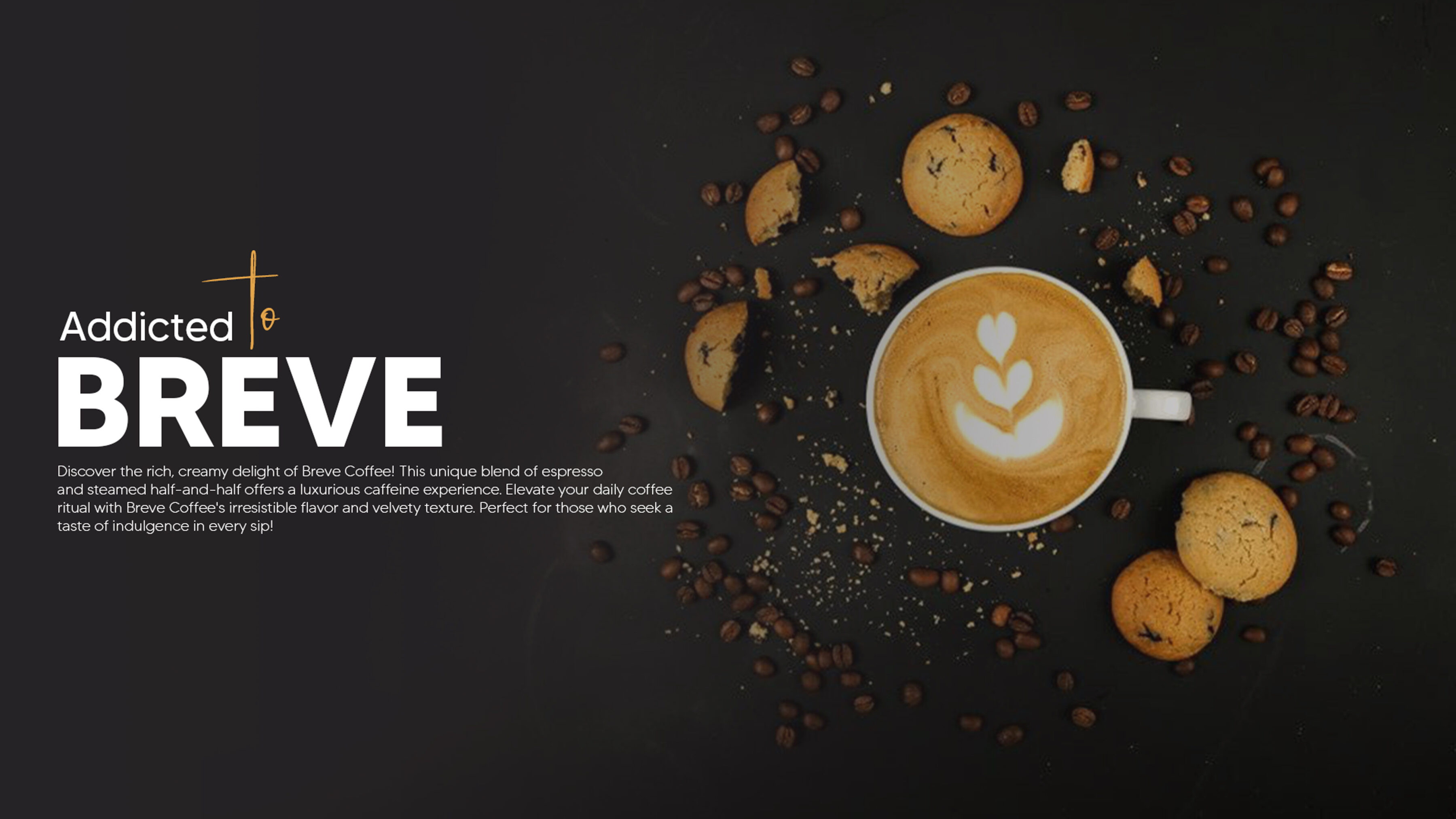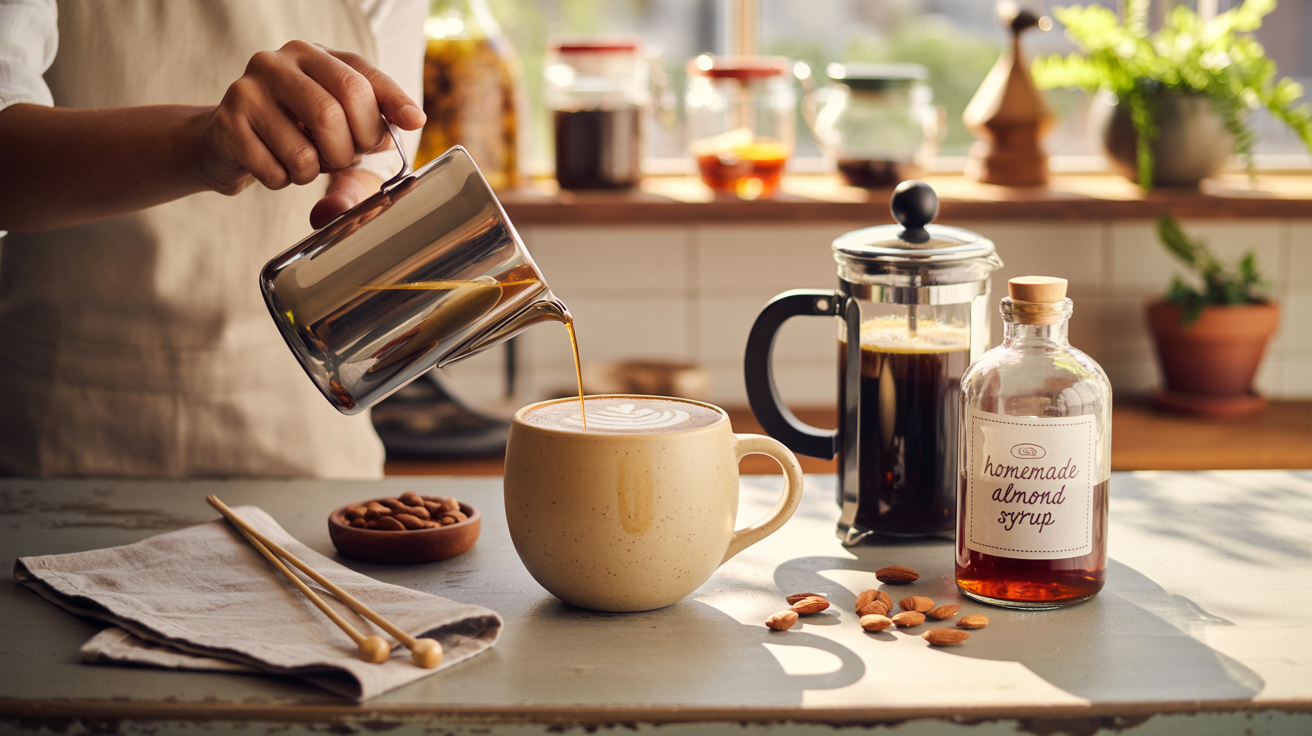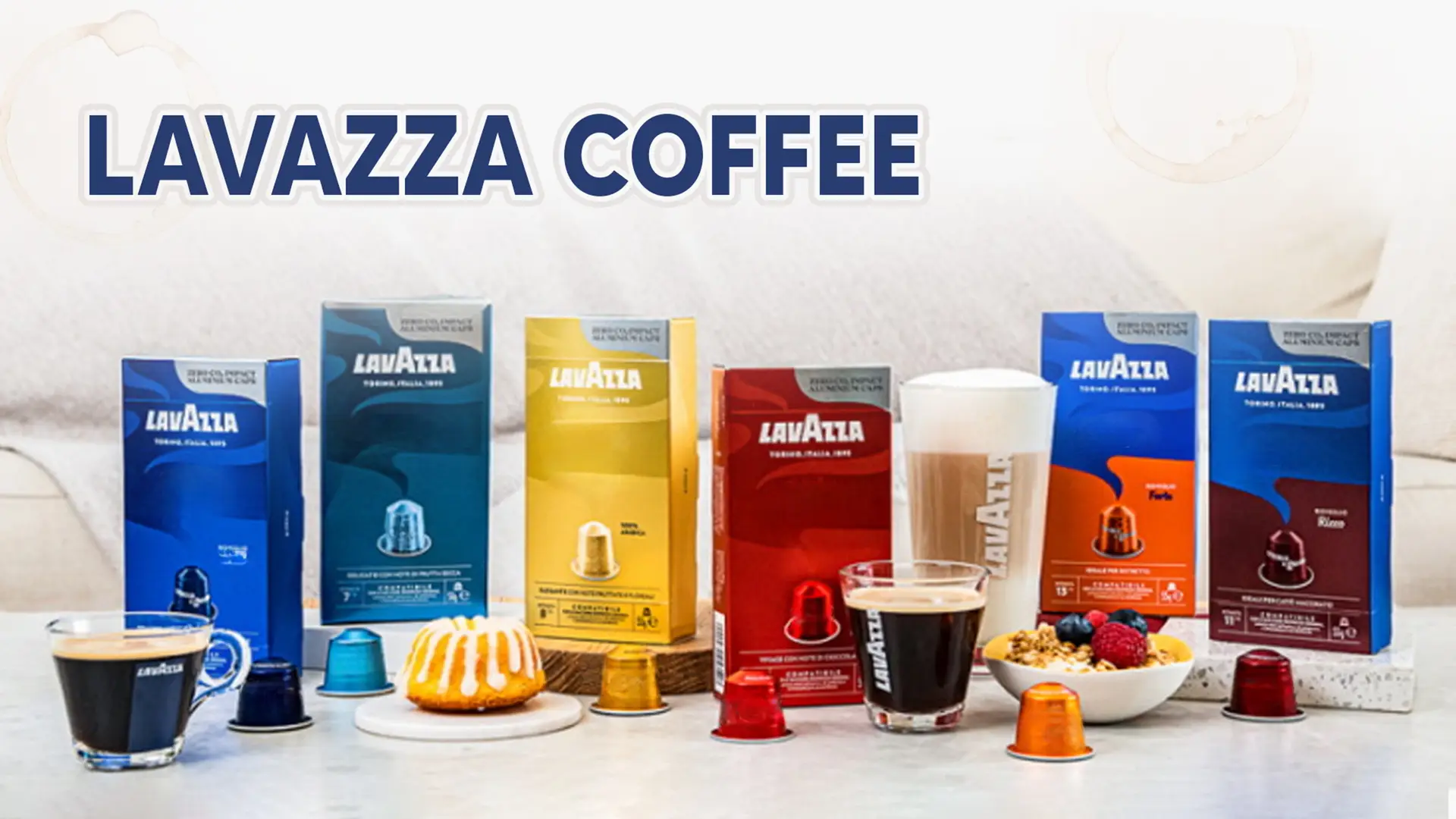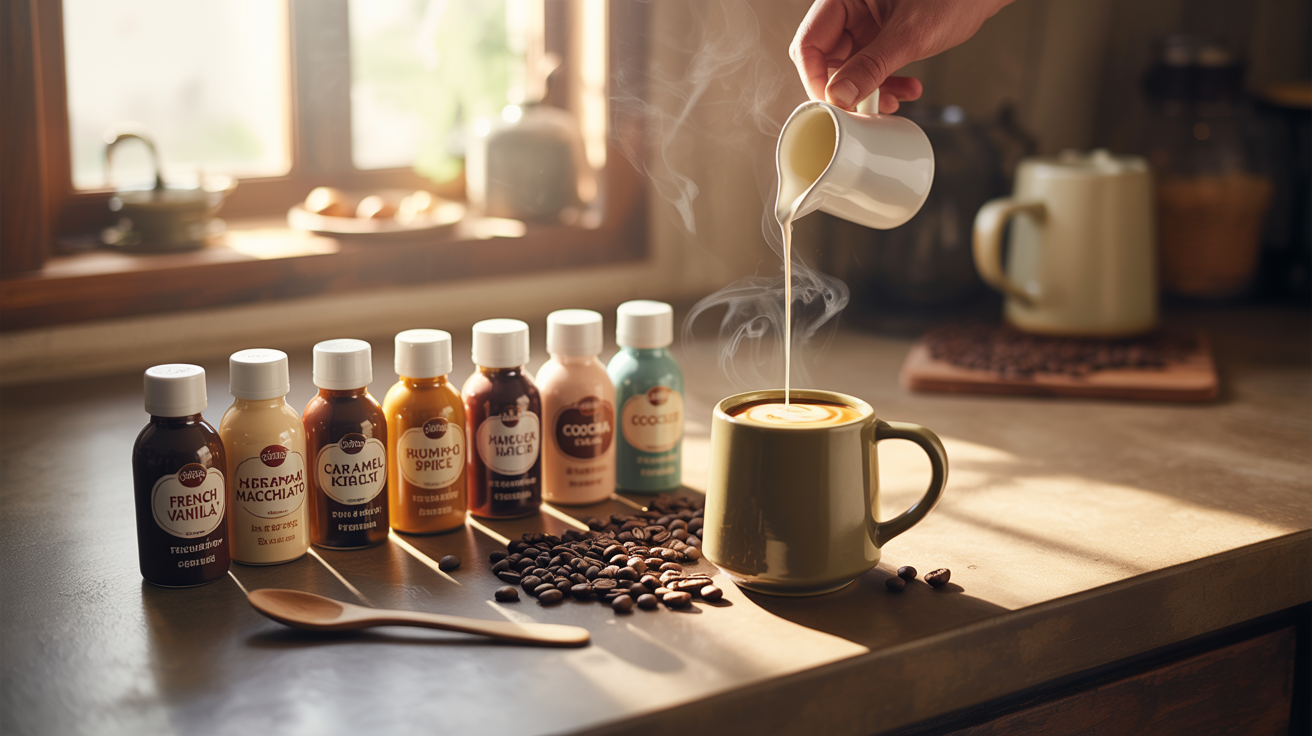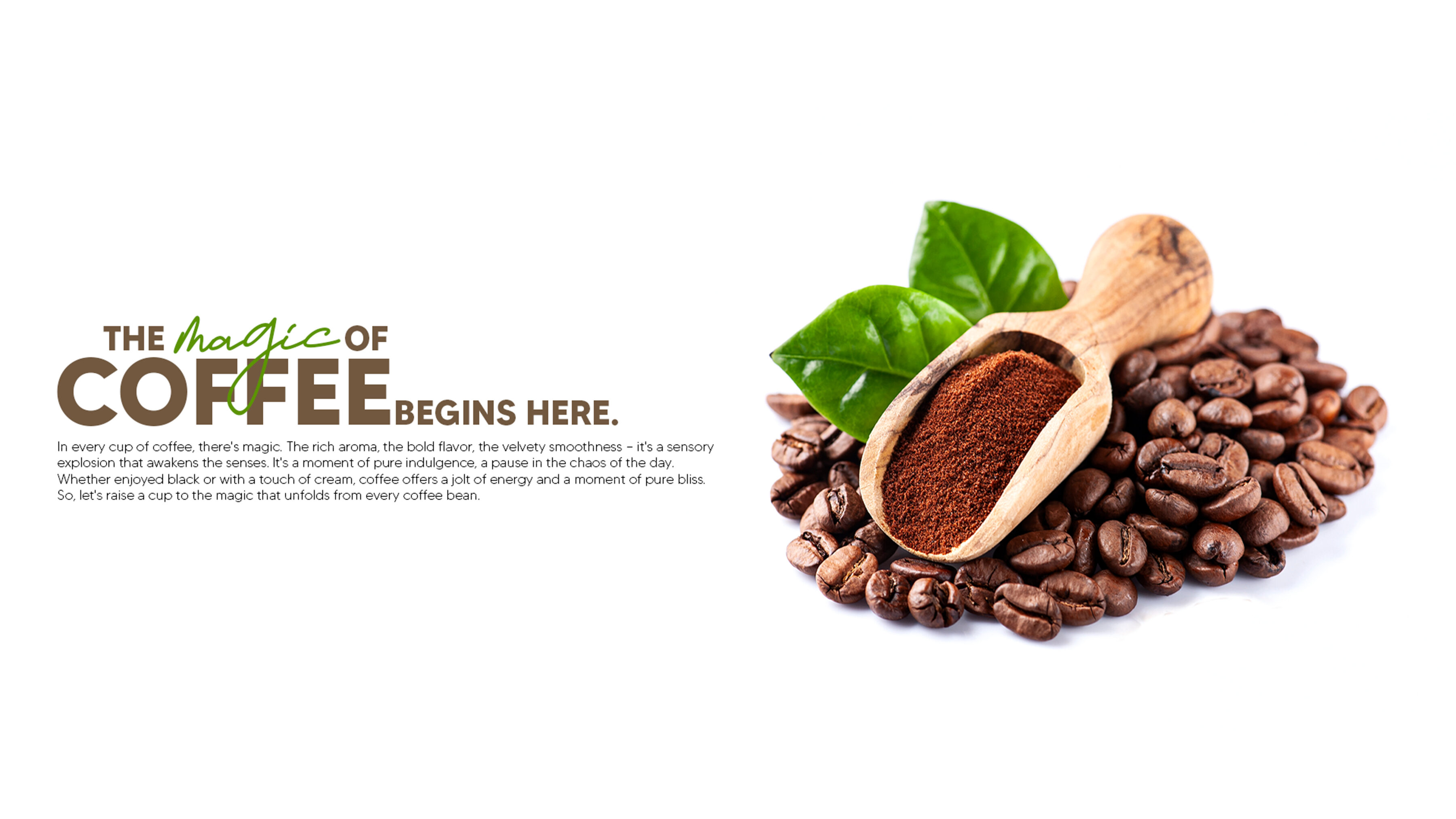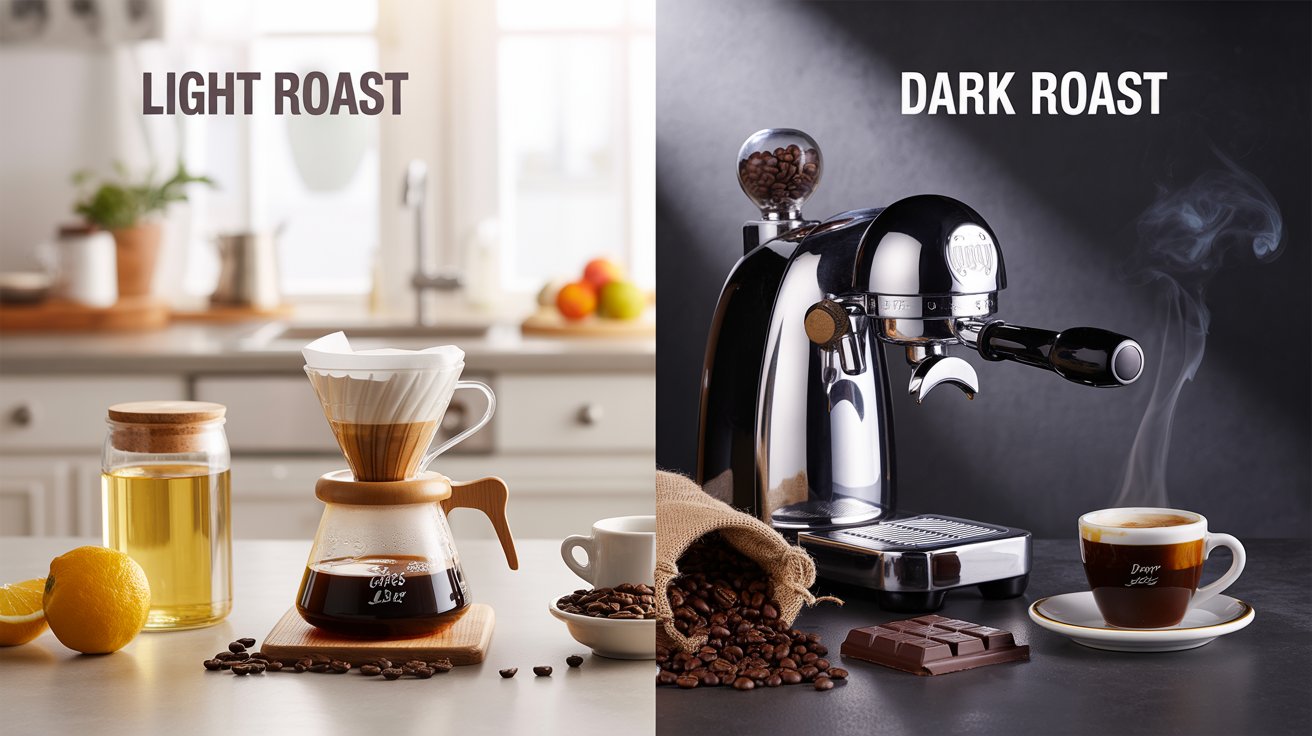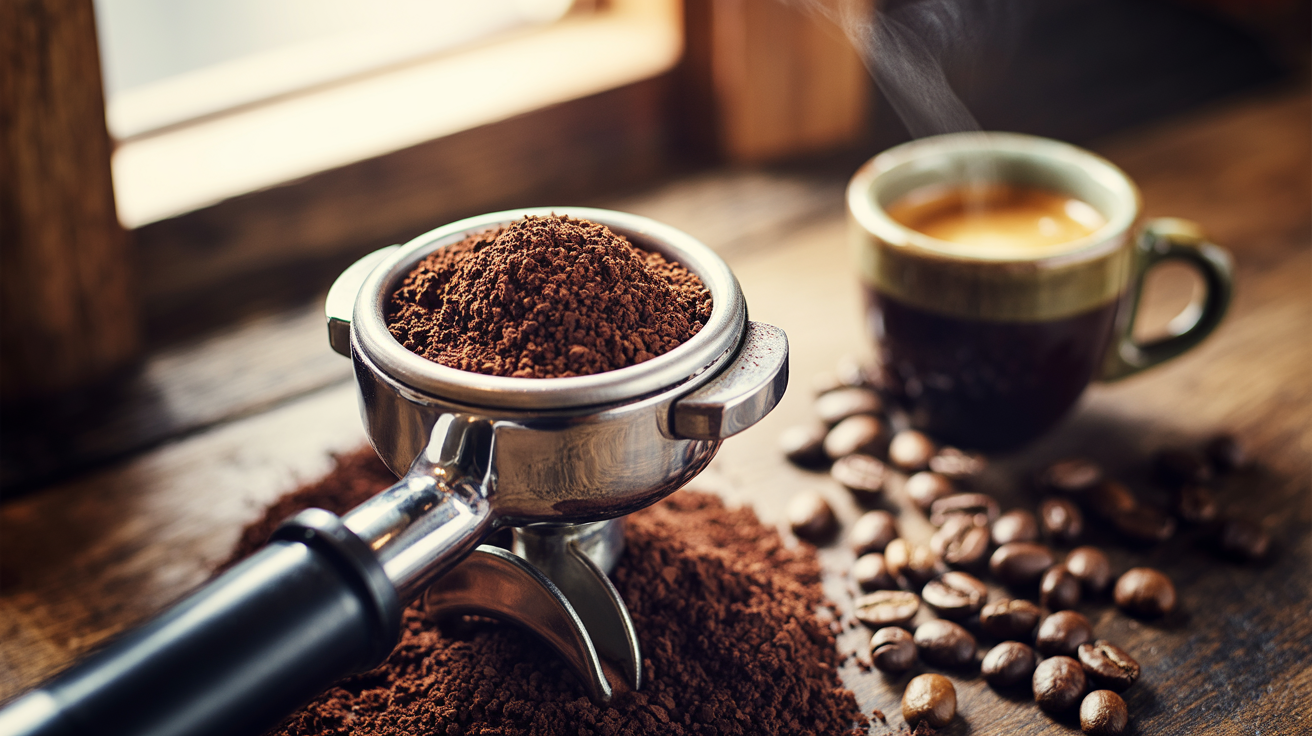5 Surprising Benefits of Drinking Breve Coffee Daily 5 Surprising Benefits of Drinking Breve Coffee Daily Introduction Briefly introduce what...
Read MoreEspresso Beans vs Coffee Beans – Which One Brews Best?

Espresso Beans vs Coffee Beans – Which One Brews Best?

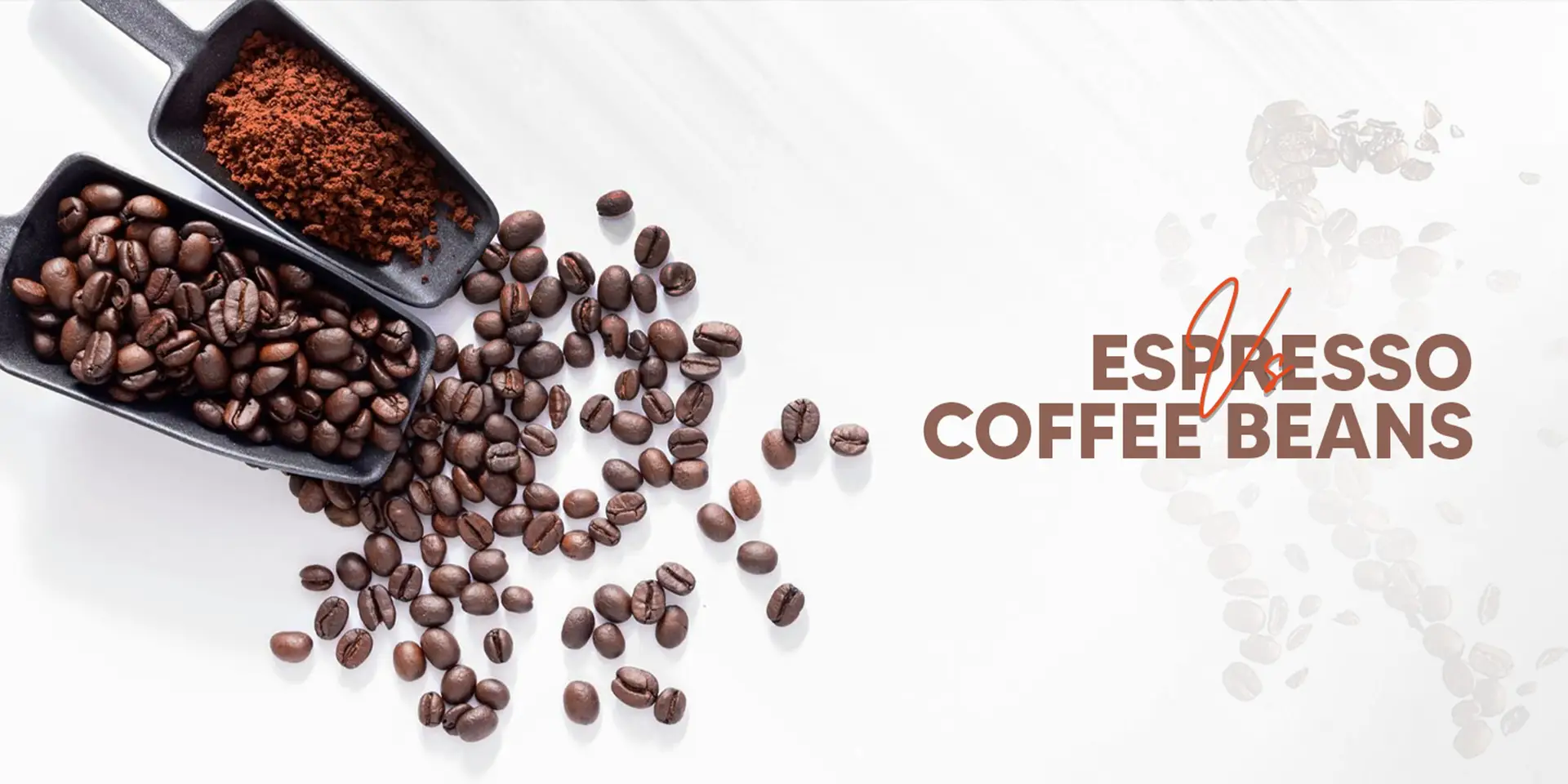
Introduction: Espresso Beans vs Coffee Beans
A brief introduction to espresso beans and coffee beans.
Espresso beans vs coffee beans are often mistaken for one another, even though they each have their own distinct roles. Espresso beans are a subtype of coffee beans which undergo a dark roast. The ground is finely processed to enable espresso machines to make an exquisitely rich shot of espresso. Regular coffee beans have different kinds of roasts and grinding levels, which allow them to be brewed using different types of machines like tents, French presses, or pour-overs. Learning the difference between coffee and espresso beans would enable you to choose the perfect one for your preferred taste as well as your style of brewing coffee. Let’s delve into what sets them apart!
What Are Espresso Beans?
Definition of espresso beans.
Coffee beans that have been specially roasted and ground to produce a strong, concentrated shot of espresso are known as espresso beans. Unlike regular coffee beans, espresso beans undergo a dark roast to further intensify flavour, lessen acidity, and make it much more suited for high-pressure espresso machines. The creamy, full-bodied flavour variety that comes with espresso making is a direct result of the fine grinding and fast extraction of flavour by the water. While it is true that any coffee bean can be used in making espresso, only espresso beans can truly maximize their flavour during brewing. Learning about espresso beans is paramount towards making great espresso, whether you are a novice or an expert.
Characteristics of espresso beans (roast level, flavour profile).
Espresso beans have a distinctively strong flavour and have a very dark roast level with low acid and a rich aftertaste. Their sugars are caramelized during roasting, which creates a strong aroma when paired with nut, chocolate, and caramel notes. Their grind is very fine to allow for high-pressure extraction, resulting in a thick shot with a creamy layer of crema. While there are many types of espresso beans available, their predominant features of dark roast and bold taste allow for great flexibility when creating other milk-based drinks, making it a crowd favourite among people looking for a powerful and rich espresso experience.
What Are Coffee Beans?
Overview of coffee beans in general.
The seeds of coffee plants, commonly known as beans, are contained in the fruit named coffee cherries. Upon harvesting, these beans undergo processing and roasting, after which we can finally enjoy our cup of coffee. The two major types of coffee beans, Arabica and Robusta, are quite different in taste. While the former has a rich and smooth flavor profile, the latter is stronger, harsher, and offers better roasting. Just as with most beans, coffee beans can also be roasted, and in turn, their aroma and taste will differ depending on the level – light or dark roast. Understanding the different types of coffee and their corresponding beans is essential if one hopes to choose the ideal beans for their preferred brewing method.
The different types of coffee beans (Arabica, Robusta, etc.).
Various kinds of coffee beans exist, but the most common are Arabic and Robusta. Arabic coffee beans are easier and smoother to drink while having a delicious aroma that is appreciated all across the globe, and they are considered to be the better quality beans. Over 60-70% of the world’s coffee production uses Arabic coffee due to their specialty. On the contrary, Robusta beans are blended into espressos due to their bitter taste and stronger scent combined with their higher caffeine value. There are also other lesser-known types of beans, such as Liberica and Excelsa, which have flavours and characteristics that are perfect for those who love exploring new tastes.
Key Differences Between Espresso Beans Vs Coffee Beans
Roasting Process: How espresso beans are roasted differently from regular coffee beans.
The differentiation between espresso and coffee beans is largely dependent on the roasting. In this case, espresso beans are usually roasted darker and longer, which creates their signature richer flavour. Unlike regular coffee beans that have a medium to light roast, espresso beans tend to have a darker roast due to the bold and concentrated flavour and taste desired in espresso. Moreover, the high-pressure brewing process used in espresso machines requires a finer and more uniform grind, which adds to the need for darker roasted beans. Knowing the differences in each type of coffee bean allows you to select the right beans suited to your needs.
Grinding Process: Fine grind for espresso vs coarser grind for other brewing methods.
The grinding process is fundamental in achieving the desired taste and quality of coffee. Coffee aficionados know that making espresso coffee requires finely ground coffee so that water can flow through the grounds under pressure and extract rich flavours in a limited time. Pour over and French press methods need large coffee grinds. The coarser the grind, the slower the water flows, which helps avoid over-extraction and creates a calm taste. Knowing the difference in grind size is important for achieving maximized results for each brewing method, be it espresso beans or regular coffee beans.
Flavour Profiles: Espresso beans have a more concentrated, intense flavour compared to regular coffee beans.
Espresso beans have an intense flavor when savored as compared to ordinary coffee beans. Espresso beans are darker and finely roasted which gives a bolder taste and makes them perfect for espresso based drinks such as lattes and cappuccinos. With regular coffee beans, as they have lower intensity, they are preferred for pour over, French press, and drip coffee. The higher the pressure while making coffee, the richer the flavour profile will be. The brew will be a blend of smoothness and slight bitterness.
Brewing Methods: Differences in how espresso is brewed compared to regular coffee (espresso machines vs drip or pour-over methods).
Brewing methods separate espresso from regular coffee. An espresso shot is extracted with an espresso machine; it brews by forcing hot water through finely ground espresso beans with pressure. This coffee retrieval method produces a concentrated shot of coffee with an intense flavour, resulting in a rich and full-bodied espresso. Espresso coffee, on the other hand, can also be brewed using drip brewing or pour-over techniques. These two techniques allow hot water to flow through the coarse coffee grounds. As a result, smooth regular coffee is produced. Knowing these differences helps you understand the right beans and equipment for the coffee you would like to enjoy.

Can You Use Coffee Beans for Espresso?
Exploring if regular coffee beans can be used in espresso machines.
Finding out if you can use regular coffee beans in espresso machines makes it straightforward that espresso-specific beans are easier to make and load into their respective machines. People who normally use coffee beans have to adjust their grind level to be as low as it is for coffee beans to even work with the machine. Furthermore, the espresso will taste more acidic in nature, which will depend on the kind of roast being used and if the beans are lighter than medium. The most significant factor here is how well the grinder can grind and how hard the device is being pressed to extract the final product. In case someone does not have espresso seeds to work with, the regular coffee beans seem to work well enough to perform the job needed. However, the output might not be the strongest, and frothiness might disappear.
The impact on flavour when using coffee beans instead of espresso beans.
Substituting coffee beans in place of espresso beans will substantially affect the taste of your brew. Regular coffee beans are often roasted lighter than espresso beans, which tends to create a less bold, less intense coffee flavour, while espresso beans are base roasted at darker levels, which is ideal for espresso machines. Moreover, the way regular beans are ground is much coarser compared to espresso beans, significantly impacting flavour and extraction time during brewing. There is also a possibility that coffee beans may be usable with an espresso machine, but the richness of flavour is bound to decrease.
Choosing the Right Beans for Your Brew
Factors to consider when choosing beans for espresso vs coffee.
Regardless of the type of coffee, whether espresso or regular, specific beans should be chosen to optimize the brew, and several factors should be taken into account. Dark roast beans will be preferable for espresso since they provide the required bold and intense flavour and are best suited for an espresso machine. As for the espresso grind, it is recommended to finely grind the beans to get the most out of the extraction. However, when making regular coffee, it is ideal to use medium or light roast beans since they offer the best range of flavours as well as a perfect degree of acidity. Furthermore, the origin, freshness, and grind size of the bean should all be factors to consider. Failing to do so may affect the overall drinking experience. With the correct beans, the coffee experience can be heightened, providing the perfect brew every time.
The ideal roast level for each (e.g., medium roast for drip coffee, darker roast for espresso).
The perfect roast depends mostly on how it will be brewed. For drip coffee, a medium roast is usually ideal due to its agreeable flavour profile and moderate acidity. As compared to stronger roasts, this level brings out the bean flavours with less bitterness. On the other hand, a darker roast is necessary to prepare rich and bold espresso. For espresso machines, the beans must be roasted at a darker level to bring out the taste and minimize acidity. Knowing how to roast the bean for each method will guarantee a tasty cup of coffee, whether drip or espresso.
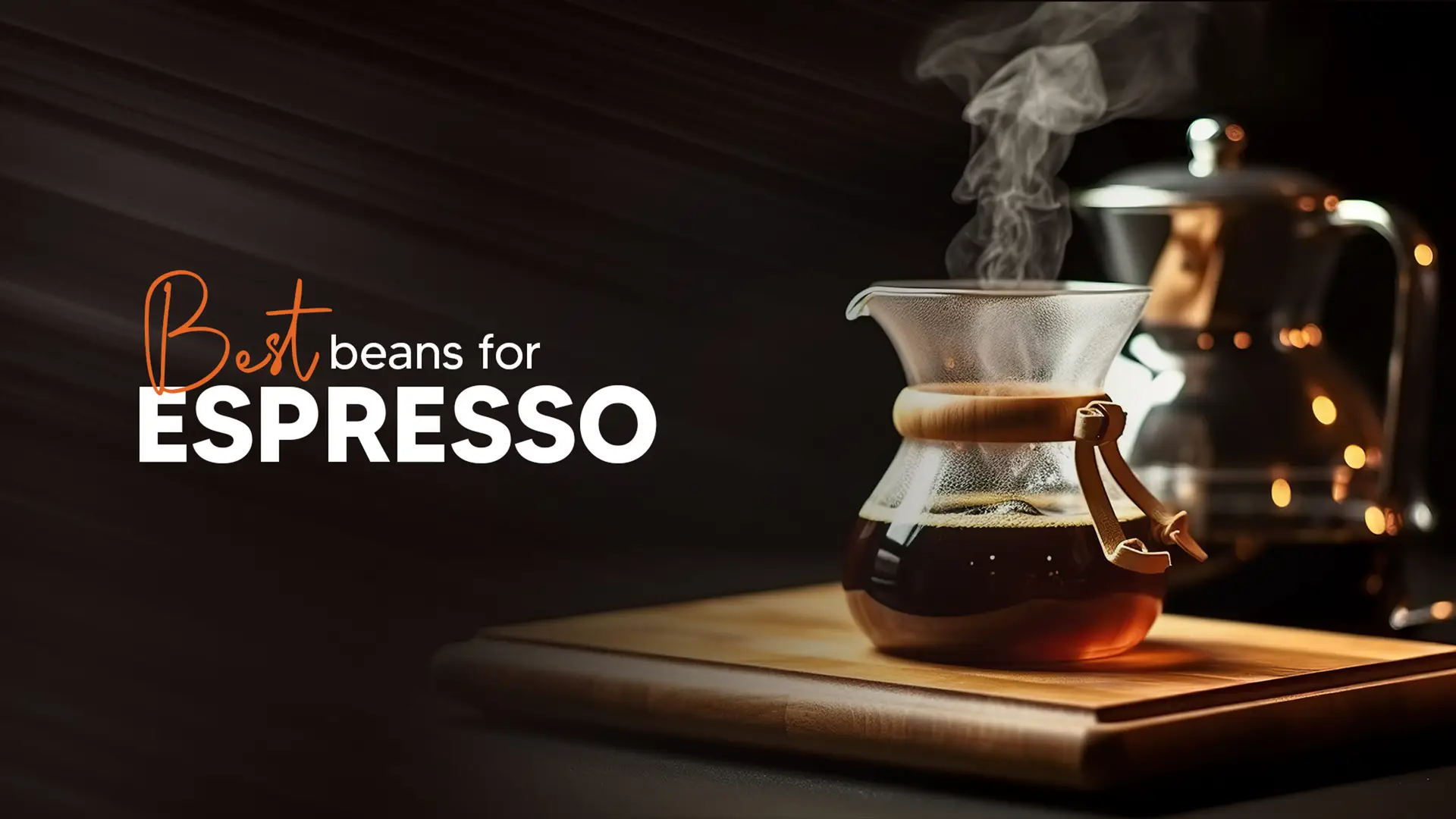
Health Benefits: Espresso Beans vs Coffee Beans
Nutritional content comparison (caffeine content, antioxidants).
There are differences in the nutritious values of espresso beans and normal coffee beans, with a focus on caffeine and antioxidants. Since espresso beans are roasted darker and more concentrated than coffee beans, they have more caffeine in ounces than the other types of beans. However, since the serving size for espresso is smaller, the amount of caffeine consumed per shot is usually higher. Both beans are rich in antioxidants, which help fight inflammation and oxidative stress. While espresso beans are said to be more powerful beans with caffeine compared to regular coffee beans, both types benefit their users’ energy and well-being.
Potential health benefits of espresso beans vs regular coffee beans.
The differences between the nutrient contents of espresso beans and coffee beans include the amount of caffeine available and their respective antioxidants. Regular coffee beans have a lower concentration of caffeine compared to espresso beans because espresso beans are roasted darker, are more compact, and generally contain more caffeine per ounce. However, with espresso, the serving size tends to decrease for each shot sipped, and the amount of caffeine consumed for each shot is normally lower. Both kinds of beans provide a great amount of antioxidants, which help with inflammation and oxidative stress. Although espresso beans offer a more enhanced cube of caffeine, both regular coffee and espresso beans help with energy levels and overall health status.
Final thoughts on how to choose the best beans for your preferred brewing method.
Choosing the right beans, whether it is coffee beans or espresso beans, will solely depend on your brewing styles and taste preferences. If you’re an espresso aficionado, dark roasted finely ground espresso beans will provide the deliciously intense flavours loved by espresso machines. On the other hand, if you enjoy the flexibility of brewing drip coffee or French press, enjoy a wide selection of flavours and aromas with light or medium roasted coffee beans. Always pay attention to the freshness and roast dates and blend different origins to find your beans. Understanding the differences in taste between coffee beans and espresso beans allows you to enhance your daily cup of coffee to a new level.
Popular Posts
How to Make Almond Syrup at Home (Better Than Store-Bought!)
Crafting Homemade Almond Syrup – A Step-by-Step Guide with Pro Tips Crafting Homemade Almond Syrup – A Step-by-Step Guide with...
Read MoreArabic Coffee: A Traditional Brew with Rich Flavors
Arabic Coffee History That Will Fascinate You Arabic Coffee History That Will Fascinate You What is Arabic coffee? Arabic coffee,...
Read MoreLavazza Coffee: Experience Premium Italian Coffee Blends
Lavazza Coffee: Rich, Premium Italian Blends for Every Coffee Lovers Lavazza Coffee: Rich, Premium Italian Blends for Every Coffee Lovers...
Read MoreCoffee Creamer Flavors for a Healthier Cup
Coffee Creamer Flavors with the Best Ingredients Coffee Creamer Flavors with the Best Ingredients 1. Introduction Brief overview of the...
Read More
Introduction: Espresso Beans vs Coffee Beans
A brief introduction to espresso beans and coffee beans.
Espresso beans vs coffee beans are often mistaken for one another, even though they each have their own distinct roles. Espresso beans are a subtype of coffee beans which undergo a dark roast. The ground is finely processed to enable espresso machines to make an exquisitely rich shot of espresso. Regular coffee beans have different kinds of roasts and grinding levels, which allow them to be brewed using different types of machines like tents, French presses, or pour-overs. Learning the difference between coffee and espresso beans would enable you to choose the perfect one for your preferred taste as well as your style of brewing coffee. Let’s delve into what sets them apart!
What Are Espresso Beans?
Definition of espresso beans.
Coffee beans that have been specially roasted and ground to produce a strong, concentrated shot of espresso are known as espresso beans. Unlike regular coffee beans, espresso beans undergo a dark roast to further intensify flavour, lessen acidity, and make it much more suited for high-pressure espresso machines. The creamy, full-bodied flavour variety that comes with espresso making is a direct result of the fine grinding and fast extraction of flavour by the water. While it is true that any coffee bean can be used in making espresso, only espresso beans can truly maximize their flavour during brewing. Learning about espresso beans is paramount towards making great espresso, whether you are a novice or an expert.
Characteristics of espresso beans (roast level, flavour profile).
Espresso beans have a distinctively strong flavour and have a very dark roast level with low acid and a rich aftertaste. Their sugars are caramelized during roasting, which creates a strong aroma when paired with nut, chocolate, and caramel notes. Their grind is very fine to allow for high-pressure extraction, resulting in a thick shot with a creamy layer of crema. While there are many types of espresso beans available, their predominant features of dark roast and bold taste allow for great flexibility when creating other milk-based drinks, making it a crowd favourite among people looking for a powerful and rich espresso experience.
What Are Coffee Beans?
Overview of coffee beans in general.
The seeds of coffee plants, commonly known as beans, are contained in the fruit named coffee cherries. Upon harvesting, these beans undergo processing and roasting, after which we can finally enjoy our cup of coffee. The two major types of coffee beans, Arabica and Robusta, are quite different in taste. While the former has a rich and smooth flavor profile, the latter is stronger, harsher, and offers better roasting. Just as with most beans, coffee beans can also be roasted, and in turn, their aroma and taste will differ depending on the level – light or dark roast. Understanding the different types of coffee and their corresponding beans is essential if one hopes to choose the ideal beans for their preferred brewing method.
The different types of coffee beans (Arabica, Robusta, etc.).
Various kinds of coffee beans exist, but the most common are Arabic and Robusta. Arabic coffee beans are easier and smoother to drink while having a delicious aroma that is appreciated all across the globe, and they are considered to be the better quality beans. Over 60-70% of the world’s coffee production uses Arabic coffee due to their specialty. On the contrary, Robusta beans are blended into espressos due to their bitter taste and stronger scent combined with their higher caffeine value. There are also other lesser-known types of beans, such as Liberica and Excelsa, which have flavours and characteristics that are perfect for those who love exploring new tastes.
Key Differences Between Espresso Beans Vs Coffee Beans
Roasting Process: How espresso beans are roasted differently from regular coffee beans.
The differentiation between espresso and coffee beans is largely dependent on the roasting. In this case, espresso beans are usually roasted darker and longer, which creates their signature richer flavour. Unlike regular coffee beans that have a medium to light roast, espresso beans tend to have a darker roast due to the bold and concentrated flavour and taste desired in espresso. Moreover, the high-pressure brewing process used in espresso machines requires a finer and more uniform grind, which adds to the need for darker roasted beans. Knowing the differences in each type of coffee bean allows you to select the right beans suited to your needs.
Grinding Process: Fine grind for espresso vs coarser grind for other brewing methods.
The grinding process is fundamental in achieving the desired taste and quality of coffee. Coffee aficionados know that making espresso coffee requires finely ground coffee so that water can flow through the grounds under pressure and extract rich flavours in a limited time. Pour over and French press methods need large coffee grinds. The coarser the grind, the slower the water flows, which helps avoid over-extraction and creates a calm taste. Knowing the difference in grind size is important for achieving maximized results for each brewing method, be it espresso beans or regular coffee beans.
Flavour Profiles: Espresso beans have a more concentrated, intense flavour compared to regular coffee beans.
Espresso beans have an intense flavor when savored as compared to ordinary coffee beans. Espresso beans are darker and finely roasted which gives a bolder taste and makes them perfect for espresso based drinks such as lattes and cappuccinos. With regular coffee beans, as they have lower intensity, they are preferred for pour over, French press, and drip coffee. The higher the pressure while making coffee, the richer the flavour profile will be. The brew will be a blend of smoothness and slight bitterness.
Brewing Methods: Differences in how espresso is brewed compared to regular coffee (espresso machines vs drip or pour-over methods).
Brewing methods separate espresso from regular coffee. An espresso shot is extracted with an espresso machine; it brews by forcing hot water through finely ground espresso beans with pressure. This coffee retrieval method produces a concentrated shot of coffee with an intense flavour, resulting in a rich and full-bodied espresso. Espresso coffee, on the other hand, can also be brewed using drip brewing or pour-over techniques. These two techniques allow hot water to flow through the coarse coffee grounds. As a result, smooth regular coffee is produced. Knowing these differences helps you understand the right beans and equipment for the coffee you would like to enjoy.

Can You Use Coffee Beans for Espresso?
Exploring if regular coffee beans can be used in espresso machines.
Finding out if you can use regular coffee beans in espresso machines makes it straightforward that espresso-specific beans are easier to make and load into their respective machines. People who normally use coffee beans have to adjust their grind level to be as low as it is for coffee beans to even work with the machine. Furthermore, the espresso will taste more acidic in nature, which will depend on the kind of roast being used and if the beans are lighter than medium. The most significant factor here is how well the grinder can grind and how hard the device is being pressed to extract the final product. In case someone does not have espresso seeds to work with, the regular coffee beans seem to work well enough to perform the job needed. However, the output might not be the strongest, and frothiness might disappear.
The impact on flavour when using coffee beans instead of espresso beans.
Substituting coffee beans in place of espresso beans will substantially affect the taste of your brew. Regular coffee beans are often roasted lighter than espresso beans, which tends to create a less bold, less intense coffee flavour, while espresso beans are base roasted at darker levels, which is ideal for espresso machines. Moreover, the way regular beans are ground is much coarser compared to espresso beans, significantly impacting flavour and extraction time during brewing. There is also a possibility that coffee beans may be usable with an espresso machine, but the richness of flavour is bound to decrease.
Choosing the Right Beans for Your Brew
Factors to consider when choosing beans for espresso vs coffee.
Regardless of the type of coffee, whether espresso or regular, specific beans should be chosen to optimize the brew, and several factors should be taken into account. Dark roast beans will be preferable for espresso since they provide the required bold and intense flavour and are best suited for an espresso machine. As for the espresso grind, it is recommended to finely grind the beans to get the most out of the extraction. However, when making regular coffee, it is ideal to use medium or light roast beans since they offer the best range of flavours as well as a perfect degree of acidity. Furthermore, the origin, freshness, and grind size of the bean should all be factors to consider. Failing to do so may affect the overall drinking experience. With the correct beans, the coffee experience can be heightened, providing the perfect brew every time.
The ideal roast level for each (e.g., medium roast for drip coffee, darker roast for espresso).
The perfect roast depends mostly on how it will be brewed. For drip coffee, a medium roast is usually ideal due to its agreeable flavour profile and moderate acidity. As compared to stronger roasts, this level brings out the bean flavours with less bitterness. On the other hand, a darker roast is necessary to prepare rich and bold espresso. For espresso machines, the beans must be roasted at a darker level to bring out the taste and minimize acidity. Knowing how to roast the bean for each method will guarantee a tasty cup of coffee, whether drip or espresso.

Health Benefits: Espresso Beans vs Coffee Beans
Nutritional content comparison (caffeine content, antioxidants).
There are differences in the nutritious values of espresso beans and normal coffee beans, with a focus on caffeine and antioxidants. Since espresso beans are roasted darker and more concentrated than coffee beans, they have more caffeine in ounces than the other types of beans. However, since the serving size for espresso is smaller, the amount of caffeine consumed per shot is usually higher. Both beans are rich in antioxidants, which help fight inflammation and oxidative stress. While espresso beans are said to be more powerful beans with caffeine compared to regular coffee beans, both types benefit their users’ energy and well-being.
Potential health benefits of espresso beans vs regular coffee beans.
The differences between the nutrient contents of espresso beans and coffee beans include the amount of caffeine available and their respective antioxidants. Regular coffee beans have a lower concentration of caffeine compared to espresso beans because espresso beans are roasted darker, are more compact, and generally contain more caffeine per ounce. However, with espresso, the serving size tends to decrease for each shot sipped, and the amount of caffeine consumed for each shot is normally lower. Both kinds of beans provide a great amount of antioxidants, which help with inflammation and oxidative stress. Although espresso beans offer a more enhanced cube of caffeine, both regular coffee and espresso beans help with energy levels and overall health status.
Final thoughts on how to choose the best beans for your preferred brewing method.
Choosing the right beans, whether it is coffee beans or espresso beans, will solely depend on your brewing styles and taste preferences. If you’re an espresso aficionado, dark roasted finely ground espresso beans will provide the deliciously intense flavours loved by espresso machines. On the other hand, if you enjoy the flexibility of brewing drip coffee or French press, enjoy a wide selection of flavours and aromas with light or medium roasted coffee beans. Always pay attention to the freshness and roast dates and blend different origins to find your beans. Understanding the differences in taste between coffee beans and espresso beans allows you to enhance your daily cup of coffee to a new level.
Popular Posts
Coffee Beans: Discover the Best Beans for Every Brew
Unlocking the Secrets of Coffee Beans: Types, Roasting, and Brewing Unlocking the Secrets of Coffee Beans: Types, Roasting, and Brewing...
Read MoreLight vs Dark Roast Coffee: Which One Is Right for You?
Light vs Dark Roast Coffee: What Every Coffee Lover Should Know Light vs Dark Roast Coffee: What Every Coffee Lover...
Read MoreAmaretto Coffee: A Sweet, Nutty Twist on Your Favorite Brew
How to Make the Best Amaretto Coffee: Delicious Recipes & Syrup Guide How to Make the Best Amaretto Coffee: Delicious...
Read MoreThe Ultimate Guide to Perfect Espresso Grounds
The Ultimate Guide to Perfect Espresso Grounds The Ultimate Guide to Perfect Espresso Grounds Introduction: Mastering Espresso Grounds for Great...
Read MoreArabic Coffee: A Traditional Brew with Rich Flavors
Arabic Coffee History That Will Fascinate You Arabic Coffee History That Will Fascinate You What is Arabic coffee? Arabic coffee,...
Read MoreEspresso Beans: Find the Best Beans for Perfect Espresso
Boost Your Day with Instant Espresso: Quick & Delicious! Boost Your Day with Instant Espresso: Quick & Delicious! Introduction A...
Read More

